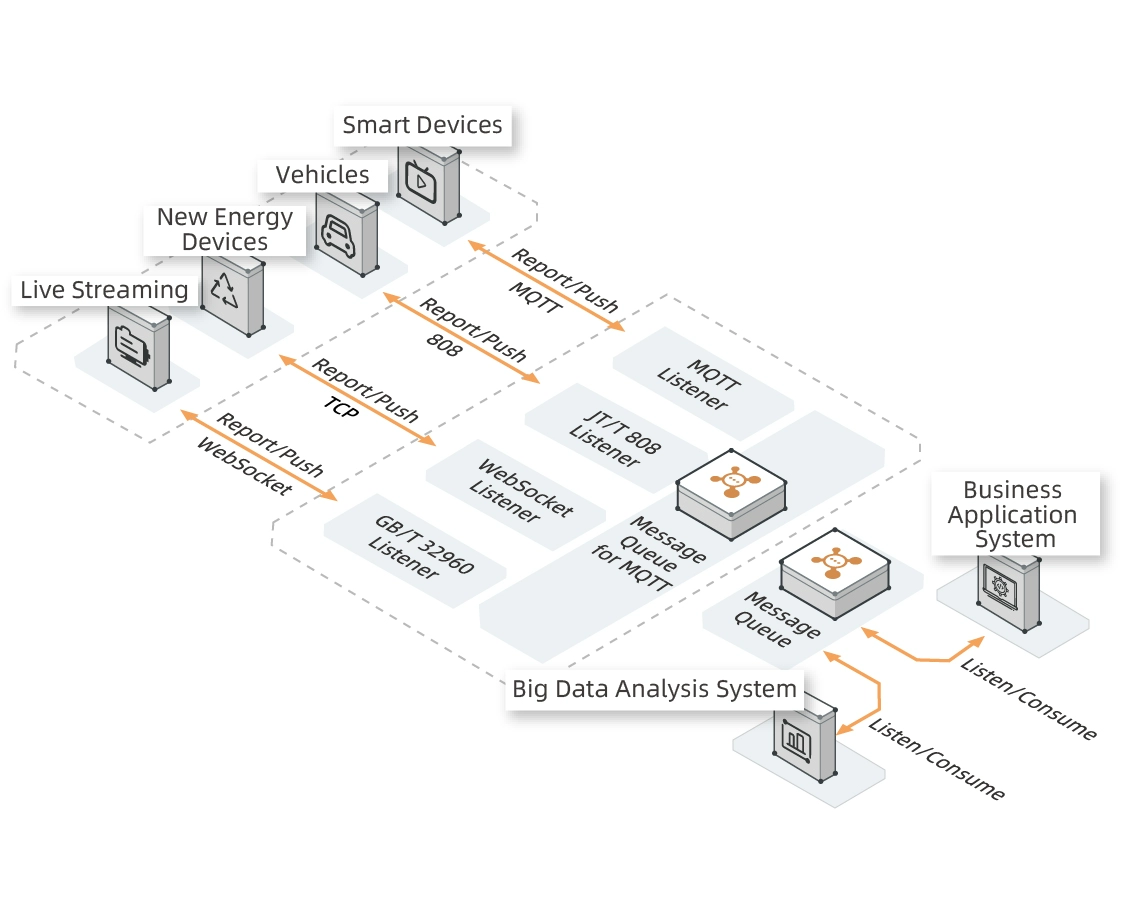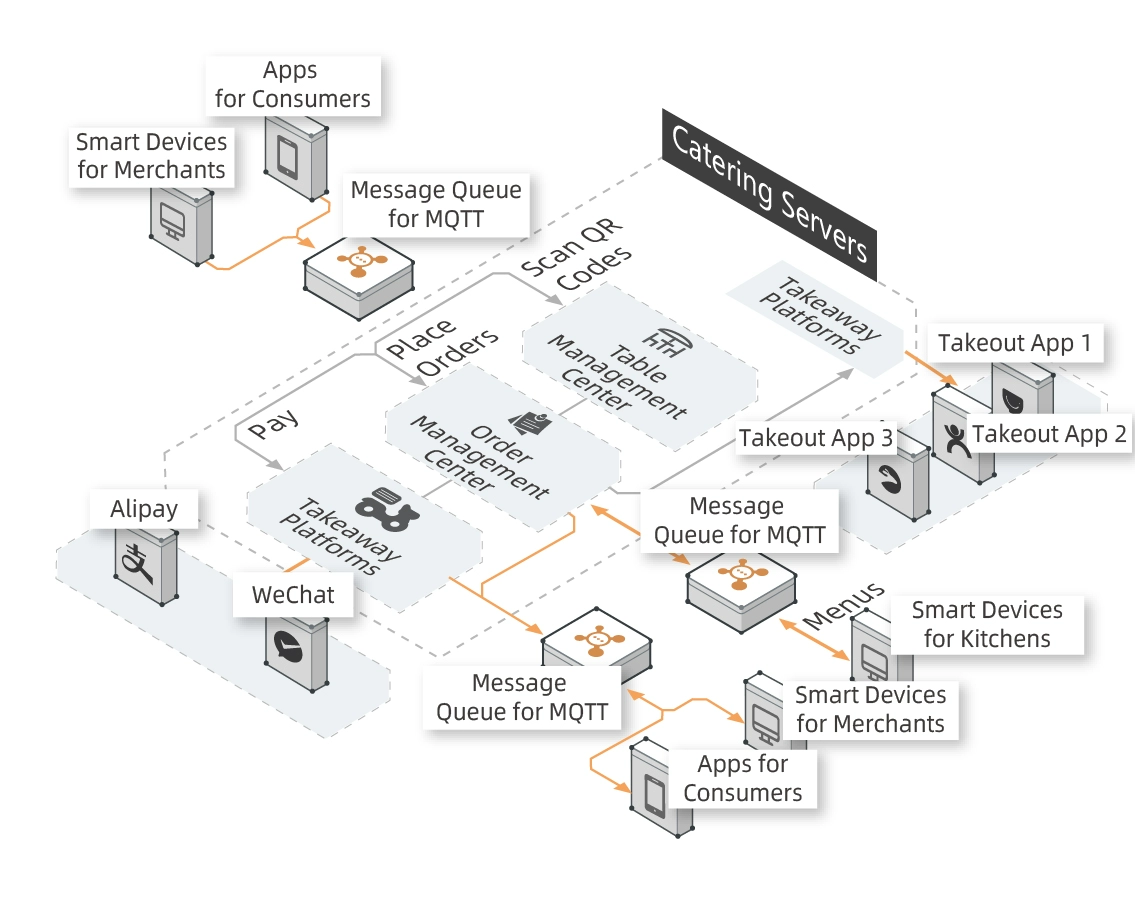ApsaraMQ for MQTT is a message service that is designed specifically for IoT and mobile Internet (MI). The service can be applied to multiple scenarios, including live streaming, financial payments, smart catering, instant messaging, mobile apps, smart devices, and Internet of Vehicles. Message Queue for MQTT supports multiple protocols including MQTT and WebSocket to enable two-way communications between devices and the cloud. In this way, messages can be exchanged in multiple business models including C2C, C2B, and B2C to achieve Internet of Everything.
Solution Highlights

Open-source Protocols
Supports MQTT, WebSocke

High Performance
Accommodates tens of millions of online devices and millions of concurrent messages. The service supports a capacity of trillions of messages and a millisecond-level latency. With a distributed design, the service eliminates single-point failures. Each component can be scaled out horizontally without limits, which ensures that the capacity can be scaled elastically on the fly.
Features
Standard IoT Protocols
Open-source and easy-to-use protocols that are supported by multiple platforms and can be used to connect all mobile Internet and IoT devices.
Pub/Sub
Supports the Pub/Sub model to implement one-to-many message delivery.
Point-to-Point (P2P)
Supports the P2P model to implement point-to-point message delivery. This mode is efficient and cost-effective.
Low Consumption
Supports lightweight transmission with low overhead and minimal protocol exchange to minimize network traffic.
Three QoS Levels
Provides three QoS levels for message delivery based on business scenarios.
At-Most-Once
Allows a small number of lost messages. A message can be transmitted at most one time.
At-Least-Once
Ensures that each message can be received. A few duplicates are allowed.
Exactly-Once
Prevents incorrect results due to duplicate or lost messages.
Powerful Operations and Maintenance Capabilities
Provides a complete set of powerful, convenient, and easy-to-use operations and maintenance tools to help users quickly locate and handle issues.
Statistical Reports
Allows you to query devices, group and manage online devices, and view message sending and receiving statistics.
Monitoring and Alerts
Monitors online connections, message accumulation, and delivery latency in real time to locate issues.
RESTful APIs
Provides RESTful APIs to customize resource management and maintenance functions in a flexible and easy manner.











